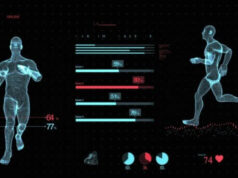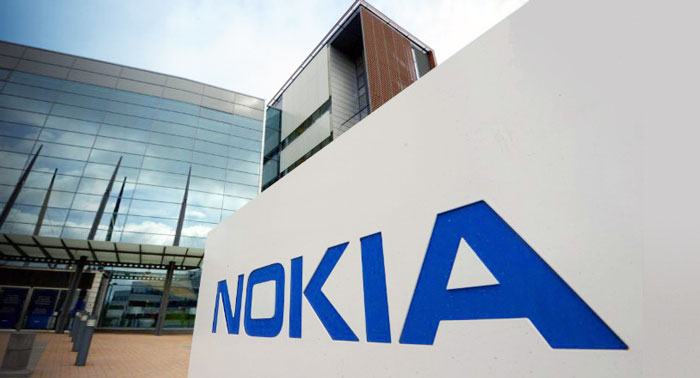NEW YORK – High-end videoconferencing – the magical ability to be in two places at once – has had a bumpy past, plagued by jerky gestures, out-of-sync lips and sound, and cumbersome equipment.
Few executives liked what they saw, including unflattering pictures of themselves, and most thought the business tool was not worth the price.
But now, thanks to new technology, videoconferencing is delivering on its promise as an alternative to traditional business travel. The high-definition TV images are sharp. Broadband fiber-optic cable has replaced tired telephone lines. And the equipment comes complete with studios that look handsome and appropriately corporate.
With the arrival of high-tech equipment, virtual meetings look better and better the worse the airport hassle becomes. You can sit across a table from a large screen showing someone who looks quite real and life-size, but may be across the Atlantic in, say, London or Frankfurt. Only a handshake and exchange of business cards are missing.
«It’s a big leap forward,» said Claire Schooley, a teleconferencing expert at Forrester Research, a technology and market research consultancy based in Cambridge, Massachusetts. «Can you imagine a sales meeting where you go to one of the new sophisticated video rooms and hear the spiel in one hour, compared to attending a meeting in a remote location? It’s perfect if you want to see the body language.»
Equipment suppliers, led by Cisco, Hewlett-Packard, Polycom and Tandberg, have created a new word – «telepresence» – to market the technology. Translated, it means «being there.»
«I just had a four-way meeting today with a CEO in London, people in his company’s New York office and in our Alpharetta office outside Atlanta, and several of us here at headquarters in Oregon,» said Ken Crangle, general manager of Hewlett-Packard’s telepresence unit, known as HP Halo.
The telepresence technology comes with a large price tag: up to $300,000 to $400,000 a studio.
«Customers are paying for a Cadillac service,» said Andrew Davis, an analyst at Wainhouse Research, a consultancy in Duxbury, Massachusetts, that tracks voice, video and web trends. «Walk in a Halo room, and everything is ready to run. There’s a slick user interface. But it eats up a massive amount of bandwidth and costs something like $18,000 a month to keep around.»
The infant telepresence industry may never produce big numbers, in dollars or units shipped, according to Davis. So far, Hewlett-Packard has sold a little over 100 units, including 28 for its own use, since Halo’s introduction in 2005.
Cisco just began shipping its first of some 110 units that it expects to sell within a year.
«I’d guess it will never be more than 1 percent of total videoconferencing sales,» Davis added. The market is dominated by simpler systems that use far less sophisticated cameras and microphones, often carried over telephone lines.
These cost about $8,000 to $15,000 each, and last year 163,000 of these units were sold, he said. Still, even this market is growing about 20 percent a year, he said.
Part of the reason for the interest in sophisticated videoconferencing is that air travel is more time-consuming than ever, just when companies are putting a premium on rapid decision-making.
«The endless problems at airports these days – whether it’s bad weather, maintenance delays, crowded cabins, or security lines – make alternatives to travel more attractive,» said Gary Foley, Xerox’s manager of global conferencing and travel services who oversees some 19,000 employees who take business trips.
But the tradeoff between video and travel can be tricky.
«The reason for actual face time is often subjective – quite difficult to quantify,» said Henry Harteveldt, Forrester’s vice president and principal analyst. «There’s the need to build a relationship, a desire to deliver good news – or bad news – in person. The virtual meeting may change the mix with fewer people traveling for sales purposes and more for client work and conventions.»
Teleconferencing veterans with long memories can recall how the AT&T Picturephone, an early video concept introduced at the 1964 New York World’s Fair, was a commercial flop. But that was then.
The new systems, in notable contrast, are sleek. For example, Cisco’s virtual meeting room includes an IP, or Internet protocol, phone, three broadcast-quality cameras, three ultra-sensitive mikes, three 60-inch plasma screens, a crescent-shaped table that seats six and soft back-lighting.
Cisco’s 3000 model sells for a hefty $299,000. But prices for these high-end systems are slowly dropping. «In September of 2005 we were pricing our new Halos at $550,000,» said Crangle of Hewlett-Packard. Now they cost between $329,000 and $399,000, depending on the model.
«Going the video route may seem expensive,» said Schooley of Forrester. «But if you’re talking about high-level executives moving about in a global company – flying first or business class or in a company jet just to see someone in person – travel adds up and the cost of sophisticated video setups can be a wash.»
Fuente: International Herald Tribune


















